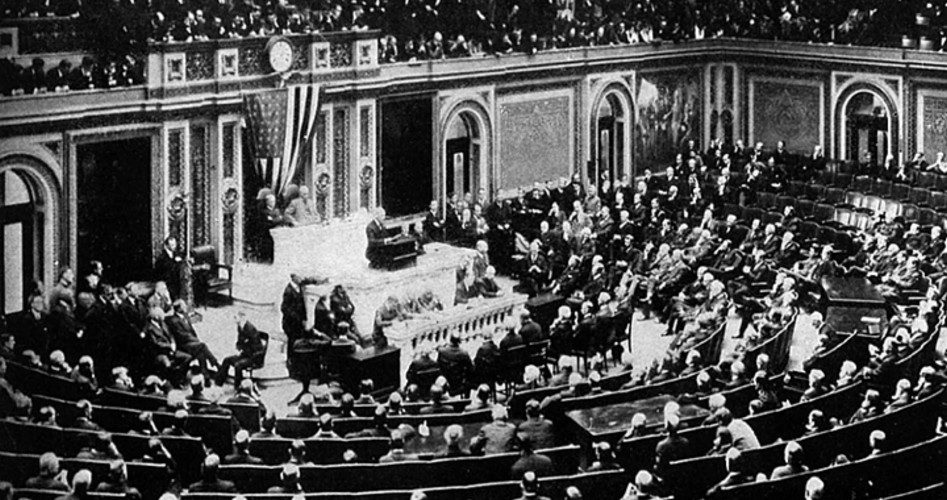
On June 8, 1789, James Madison, the congressman representing Virginia’s 5th District, rose to speak in a session of the First Congress and advocated passage of the slate of amendments to the Constitution to be known to history as the Bill of Rights. On December 15, 1791, the requisite number of states (three-quarters, or nine states) ratified the amendments and thus the Bill of Rights became the constitutional law of the land.
Many Americans are familiar with the 10 amendments that comprise our current Bill of Rights, but what of the other two proposed amendments that didn’t make the cut? What if one of them actually was ratified? What if recognition of that ratification would bring about a significant and fundamental change in the composition of the Congress?
One man, a self-described “Democratic-Republican,” has filed suit in federal court to prove that such a scenario did indeed take place and that Article the First (the first of the 12 proposed amendments, 10 of which became the Bill of Rights) should be accepted as the constitutional law of the land.
First a bit of background. Article the First was the first of the slate of 12 proposed amendments passed by the House and Senate and sent to the states for ratification. Article the First deals with the proportioning of the number of representatives in the House of Representatives.
In correspondence sent to this author, Frederick John LaVergne recounted events that he claims offer credible evidence of the ratification by the requisite number of states of one of those two originally rejected proposed amendments:
In the fall of 2011, the ratification records of Connecticut and Kentucky as concerns the “Articles of Amendment” — what we, today, refer to as “The Bill of Rights”, were discovered hidden away in the drawers of the archives of those States.
In BOTH cases, the documents clearly demonstrate that “Article the First” had been passed in the affirmative by the Legislatures of those States, even though the US Government and history say they didn’t. We can now prove different. [Emphasis in original.]
By ANY counting, that meant that 12 of the then 15 States voted to ratify “Article the First”. [Emphasis in original.]
To become a part of the Constitution, an amendment must pass 75% of the States’ Legislatures. 12 of 15 are 80% — clearly over the 75% threshold.
Therefore, “Article the First” has been the law of the land for over 220 years.
The first of two threshold questions in exploring whether Article the First was indeed ratified is whether Congress would have had to be notified of the ratification by the legislatures of Connecticut and Kentucky.
Citing the Supreme Court decision of Coleman v. Miller 307 U.S. 433 (1939), LaVergne argues that acts of state legislatures are “self-enacting” and need not be approved or even recognized by Congress in order to be effective.
The case in Coleman concerned a proposed child labor amendment to the Constitution. The Senate of the state of Kansas split evenly on the matter, leaving it to the lieutenant governor to cast the deciding vote; he voted in favor of passage. The state House of Representatives approved the measure as well.
Finally, the 20 state senators who voted against the amendment challenged the vote and the Supreme Court handed down a ruling.
While LaVergne’s position that the court held votes of the state legislature to be “self-enacting” is true, the court also held:
The Congress, in controlling the promulgation of the adoption of a constitutional amendment, has the final determination of the question whether, by lapse of time, its proposal of the amendment had lost its vitality before being adopted by the requisite number of legislatures.
This ruling obviously works against LaVergne’s effort to convince the court that Article the First should be recognized as ratified. There is little chance that Congress would ever vote to dilute its own power, particularly when evidence demonstrates that so many of the members of Congress depend on lobbyist money, and so many corporations in turn depend on the corporate welfare schemes annually renewed by our elected congressional representatives.
How would Article the First accomplish this reduction of power? Through an increase in size of the House of Representatives. In relevant part, Article the First reads:
After the first enumeration, required by the first Article of the Constitution, there shall be one Representative for every thirty thousand, until the number shall amount to one hundred, after which the proportion shall be so regulated by Congress, that there shall not be less than one hundred Representatives, nor less than one Representative for every forty thousand persons, until the number of Representatives shall amount to two hundred, after which the proportion shall be so regulated by Congress, that there shall not be less than two hundred Representatives, nor less than one Representative for every fifty thousand persons.
One representative for every 50,000 persons. At the last census, the population of the United States was 308,745,538. Were it the law, that would increase the size of the House of Representatives from the current 435 to 6,174! While that number sounds (and is) astounding, crunching the numbers another way reveals that as pertaining to population, the ratio of Representative to citizen is 1:709,760. A far cry from the 1:50,000 ratio mandated by Article the First.
While the debate of whether Article the First was really ratified is likely to go unsettled (and Congress would never agree to it now), there remains the question of how the nation arrived at the magic number of 435.
It is because of laws passed by Congress in 1911 and in 1929. At the time of the debate on the bill setting the arbitrary limit on the number of representatives, one clear-thinking congressmen made the following observation:
The bill seeks to prescribe a national policy under which the membership of the House shall never exceed 435 unless Congress, by affirmative action, overturns the formula and abandons the policy enunciated by this bill. I am unalterably opposed to limiting the membership of the House to the arbitrary number of 435. Why 435? Why not 400? Why not 300? Why not 250, 450, 535, or 600? Why is this number 435 sacred? What merit is there in having a membership of 435 that we would not have if the membership were 335 or 535? There is no sanctity in the number 435.… There is absolutely no reason, philosophy, or common sense in arbitrarily fixing the membership of the House at 435 or at any other number.
An opinion piece published in 2010 by the New York Times agrees:
The result [of the law passed in 1911 that set the number of representatives at 435] is that Americans today are numerically the worst-represented group of citizens in the country’s history. The average House member speaks for about 700,000 Americans. In contrast, in 1913 he represented roughly 200,000, a ratio that today would mean a House with 1,500 members — or 5,000 if we match the ratio the founders awarded themselves.
That ratio — the one established by the Constitution — is set forth in Article I, Section 2. “The Number of Representative shall not exceed one for every thirty Thousand.” The Constitutional Convention in Philadelphia in 1787 settled on this number after considering proposals for setting the ratio at one representative per every 40,000 (the original ratio reported out of Committee) and one for every 35,000. Additionally, there was some heated debate over whether the relative wealth of a state, as well as population, should be a factor in the equation determining representation in the House.
In the Times article, the effect of statutorily fiddling with the Constitution’s math is succinctly stated: “This disparity increases the influence of lobbyists and special interests: the more constituents one has, the easier it is for money to outshine individual voices. And it means that the representatives have a harder time connecting with the people back in their districts.”
Well said. There is strong historical support for this theory, as well. Madison similarly expressed the need for constituents to feel connected to their representatives to the national legislature. In Federalist,No. 57, he wrote,
The house of representatives … can make no law which will not have its full operation on themselves and their friends, as well as the great mass of society. This has always been deemed one of the strongest bonds by which human policy can connect the rulers and the people together. It creates between them that communion of interest, and sympathy of sentiments, of which few governments have furnished examples; but without which every government degenerates into tyranny.
The Founders anticipated that the size of the House would grow. James Madison participated in that debate and wrote, “I take for granted … that the number of representatives will be augmented from time to time in the manner provided by the Constitution.”
In his “Common Sense” column, Paul Jacobs made a point that was at once cogent, clever, and condemning:
Are career politicians likely to chop their own personal power to do what’s best for the country and the institution of Congress? Nope. But they do talk a lot about taking the big money out of politics. Well, if they’re serious, this is one way to do it without destroying the First Amendment and handing incumbents power to regulate their opponents.
Support for this movement among constitutionalists is growing. The inertia it is experiencing makes sense as Americans committed to restoring the sovereignty of states should have an affinity for such a cause, as a likely effect of successfully repealing the current cap would be strengthening of the ties that should rightfully bind congressmen to constituents.
Joe A. Wolverton, II, J.D. is a correspondent for The New American and travels frequently nationwide speaking on topics of nullification, the NDAA, and the surveillance state. He can be reached at [email protected].



